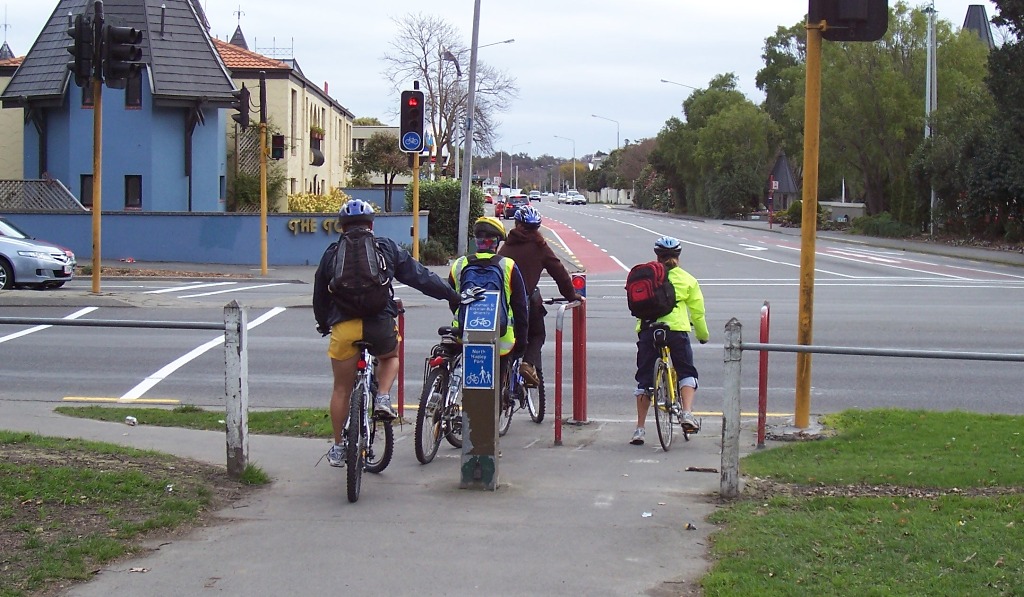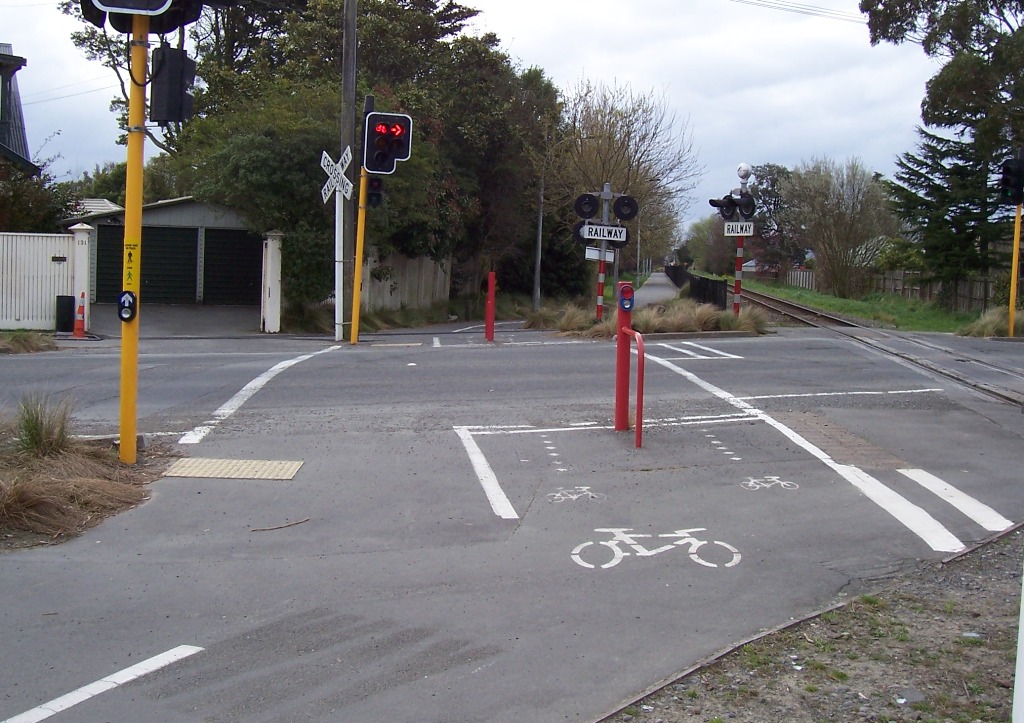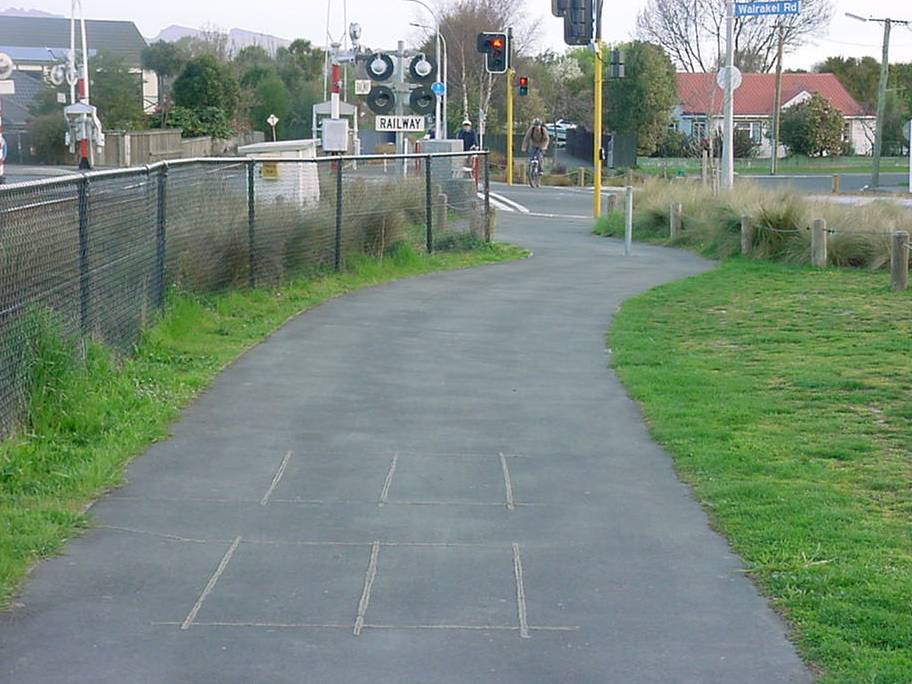Anyone who uses many of the new Major Cycle Routes will appreciate the way that most of the signalised crossings along the way quickly detect a rider and then provide a crossing phase for riders. Some of the detection technology used now is new, in the form of overhead video detectors, but the concept of giving riders an automatic leg-up (and letting them know it’s coming) is not that new. This article from Jan 2013 explains how it works…
We showcase a lot of neat overseas cycling facilities here on this site, but Christchurch has actually developed some pretty world-beating stuff itself over the years. Exhibit #1: cycle detectors at signalised path crossings:

As a cyclist approaching a signalised crossing, the traditional approach is to treat it like a pedestrian crossing: push a button and wait for your signal. Now if it was a pedestrian crossing, you’d see a “red man” show up when you pushed the button and you’d know to wait for the “green man”. But if there’s already a red cycle signal showing, how do you know if your request to cross was picked up? Hmm, maybe you should just sneak across anyway?

The clever bods at the City Council decided to take a standard pedestrian call button and insert a little red cycle light. Then they connected this to detectors under the pathway tuned to pick up when a bike crossed over them. The net result: you rock up on your bike and even before you’ve pushed anything the little light lets you know that you’ve been detected!

You’ll find a bunch of these crossing detectors scattered around the periphery of Hagley Park, and along the Railway Cycleway; there’s also a set on Oxford Tce where the Antigua Boatshed route crosses over, and on the Matai St cycleway crossing Straven Rd.

In the case of the Railway Cycleway, the detectors are not only at the crossings but about 30m in advance. That way, you are detected well before you reach the crossing, by which time you usually have a green crossing signal!

What do you think about these cycle detectors? Any other places where they could go?

These are great, I cross one every day on my way to work at the southern Deans Ave crossing; the red light definitely promotes patience. Although I have noticed that if I’m behind another cyclist who crosses but I don’t make it across the sensor waits until about 1 sec after the cycle light goes red until it will activate the crossing again. Usually this is fine as I will just press the pedestrian crossing button to trigger it again or otherwise wait a few moments for the video sensor to pick you up.
They’re great if they don’t turn off while you’re waiting for the light to change…
It seems like in a lot of places they have gone back to relying on the buttons. I’m not sure if this is because they didn’t light up reliably or because too many cyclists that cross the sensor aren’t actually crossing and they don’t want the light to change unnecessarily
They are still a bit unreliable on my carbon bike with carbon wheels. I realize this is very much a first-world problem though! With alloy wheels they are fine.
Dave – one hack is to check if your shoes have enough metal to trip the detectors. SPD cleats are metal, and even road cleats bolts can be enough to help trip the sensor.
All you have to do is unclip and hang one foot just clear of the surface, while coasting over the detector lines.
I wonder if a piece of tinfoil in a flat shoe would be enough to achieve the same result ? Certainly workboots with steel caps, and/or shovel protection under the arch of your foot are enough to trip sensors (just in case you ride an all-carbon bike to the worksite :))
Tinfoil is not magnetic (okay, technically it is, but if the magnetic field is that strong, you’ll have other issues), so I doubt it would affect the inductor loop.
Although often grumbling to myself ‘the dodgy stuff would never happen in The Netherlands’ I guess they’ve had a bit more time to tweak things to provide consistency ad quality. Am grateful for what we do have now and look forward to more cycleway construction starting again this year.